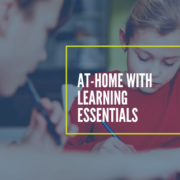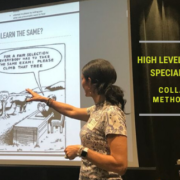Writing a Paragraph: Middle School
Writing is arguably one of the most beneficial skills taught in the academic realm. Since strong writing abilities are valuable in every content area and career down the road, mastery of this skill is essential. As with most undertakings, practice is key to developing a student’s writing—the more a child writes, the better that child will progress as he advances through his education.
For middle school students who have simply scratched the surface of paragraph writing in elementary school, writing takes a rather large leap in the middle grades. The expectation is that students arrive to middle school with a basic grasp of appropriate conventions and sentence structure. However, the concept of writing a thesis statement and supporting that claim with evidence is likely unfamiliar. These terms can be intimidating; however, they are guaranteed to show up in every content, from math and science, to English and history.
Similarly to elementary writing, middle school students need to practice structuring a paragraph concisely and cohesively. While younger students focus on including and organizing each component of the paragraph, middle schoolers begin to synthesize the information and write purposefully. Middle school students should be prompted to pay close attention to the purpose of their paragraph or argument. This is where parents and educators can play an important role. Ask your middle schooler questions like, “Did your paragraph address the question or prompt?” “Did your paragraph have a clear thesis or claim?” “Did you provide evidence or support that clearly connects to and addresses your thesis?” If these questions prove difficult for your young writer, consider a graphic organizer to help.
Elementary students are not the only writers that benefit from a graphic organizer. Like the cheeseburger method commonly used for K-5 grades, middle schoolers can benefit from an organizer that assists in ensuring that each supporting detail relates directly to the claim. For instance, a commonly used organizer would include the thesis statement, each key detail or piece of evidence in support of the thesis, and a brief analysis of how that support reinforces the claim or thesis.
Many see the graphic organizer as a prewriting strategy, one that must be done prior to constructing the paragraph. However, middle school students can also benefit from using the graphic organizer as a post-writing checklist. This is an opportunity for writers to work backwards and become cognizant editors of their own work. Too often, middle school writers complete a writing task without much revision or editing. Using the graphic organizer as a checklist avoids the issue of missing components in a paragraph. It also forces writers to reread their work, checking for grammatical errors and any issues involving clarity. A tip for parents would be to model the use of a graphic organizer and/or the process of proofreading. Teachers do this on a regular basis, allowing students to follow along as they “think aloud.” As you help your middle schooler with a written paragraph, go through the editing process together verbally. As you read your child’s work, ask questions such as, “Could this sentence be written more concisely?” “Do we have to use this word, or could we find a better replacement?” “Does this sentence make sense here?” “Does the paragraph seem to flow nicely?” These types of questions model the process for young writers—something that they will eventually begin to do on their own.







